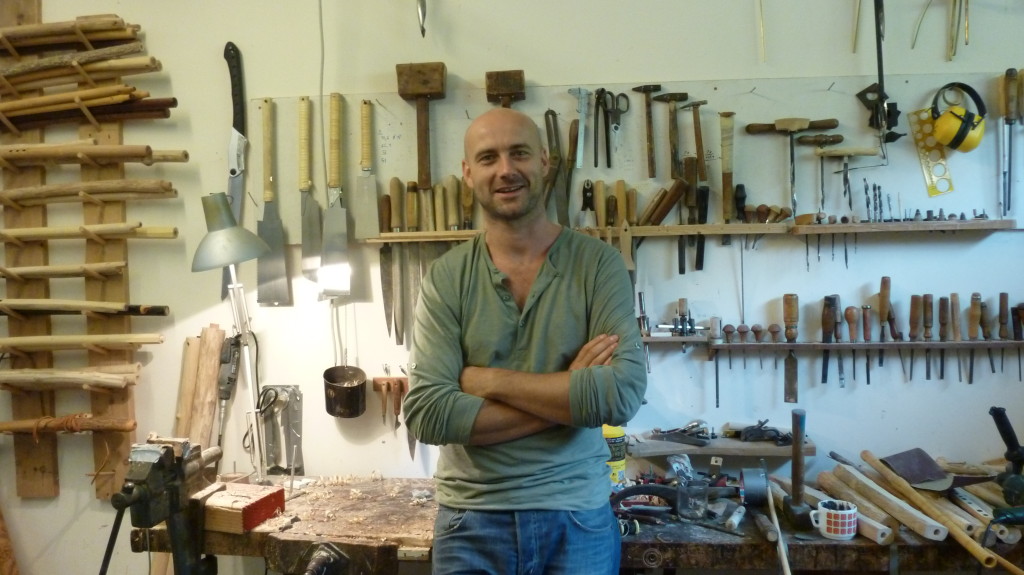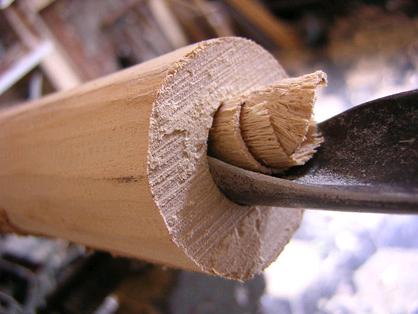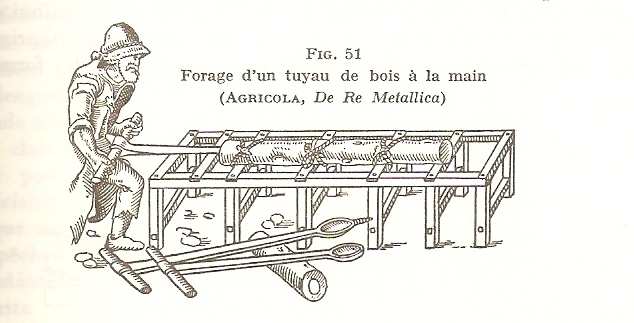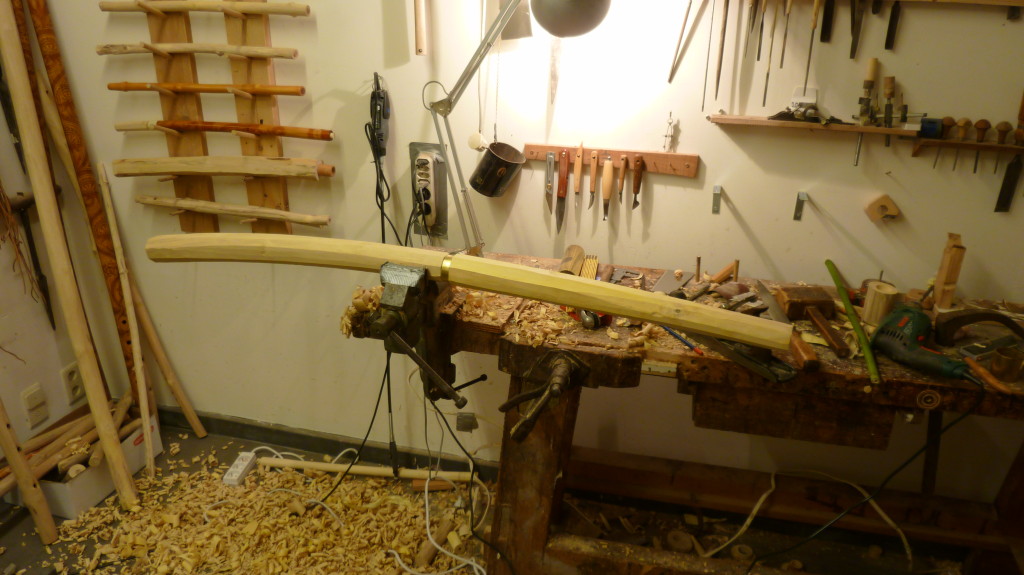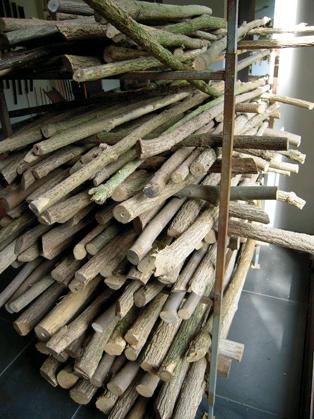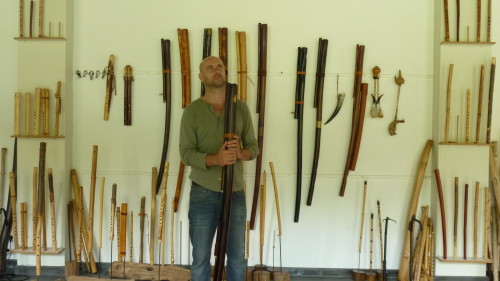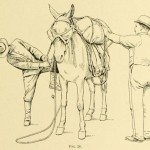The fujara is a long 3-holed fipple flute played in standing position with the flute held close to the body. It’s played using the natural harmonics system, which means the different tones are played by controlling the strength of inblown air. Using only three holes, the diatonic major scale can be reached playing two and a half octaves. Due to the natural harmonics the tuning will always be a compromise, but Belgian flutemaker and musician Winne Clement puts a great deal of effort in tuning and balancing the tones, in such a way that playing together with Western tuned instruments is possible.
All his flutes are made of harvested branches of local inland wood such as ash, elder, maple, hazle, etc. The wood is carefully chosen and cut in winter time – with respect for the environment, not damaging the donating trees – and put to dry for a long period of time. When making the flute the wood is never split in half to hollow it out, but hand-drilled with special old forged drills, leaving the main structure of the wood intact, benefiting the sound, and following the natural curves of the wood. No Tech Magazine visits Winne Clement in his studio in Ghent, where he explains us his tools and methods.
Ancient Drilling Tools
Clement’s fujara flutes are literally born in the forest. “Every year in winter, I walk through the woods in search of suitable branches. This has to happen in winter, because the sap content in branches is low. The wood will then dry faster and is less likely to crack. The making of a flute starts when I saw off a branch, because I already know what kind of flute I want to make from it. Most branches are curved, but they can be easily straightened once they are dry. The wood needs to be dried for about four years.”
The craftsman drills the branches using antique drilling tools. “Initially, I tried to bore the branches with modern tools but that didn’t work. Modern tools lack precision because they grind the wood. Old drills ladle out the wood. Branches always have a softer spot in the middle and a large ancient hand drill draws itself into it. It takes me about three hours to drill a branch. Most of my drills date from the second half of the nineteenth century. Farmers used them to drill water pipes, for example. I find them on eBay.”
“I know a Norwegian guy, already in his seventies, who is still making these large hand drills, aimed at traditional shipbuilders. But he’s a stubborn man who has been making the same type of drill for 50 years now. If you ask him for a slightly different type of drill, he turns around and walks away.”
Value for Money
It’s not just old drills — Clement’s studio holds a large collection of many other types of old tools. However, he’s not a nostalgic. Rather, it’s about value for money. “Antique tools are simply better than most modern tools which are readily available. Although it’s still possible to find modern tools of good quality, they are much more expensive compared to the antique tools you can find on eBay. I’m lucky to be living in a time when everyone clears the attic and sells grandfather’s stuff on the internet.”
“I don’t exclude modern technology categorically. If there are new techniques to dry wood, for example, I will try them out. They usually don’t work that good, but I want to find that out myself. I also use industrially sharpened knives for cutting the sound system — the sharper the knives, the more precise the result. But my most important modern tool is the internet. It gives me inspiration, knowledge, tools and a sales channel. I work in a traditional way using antique tools and methods, but I would never have made it without my laptop.”
Shepherds
The fujara has a unique sound with very rich sounding multiphonics, grain and timbre. Its origin lays in the middle of Slovakia, and it’s assumed that its roots would lay with the 3-holed flutes played by the tambourines in the 12th and 13th century in Europe. The fujara was played by the shepherds on their long journeys away from home. It’s said when played for the sheep it would calm them down and ease the herd.
More info: Fujara Flutes. The making of a 7 holed fipple Kaval flute is shown in the beautiful video below. The second video shows the maker playing the flute. Also check out our earlier article on hand powered drilling tools and machines, and earlier woodworking posts.
